
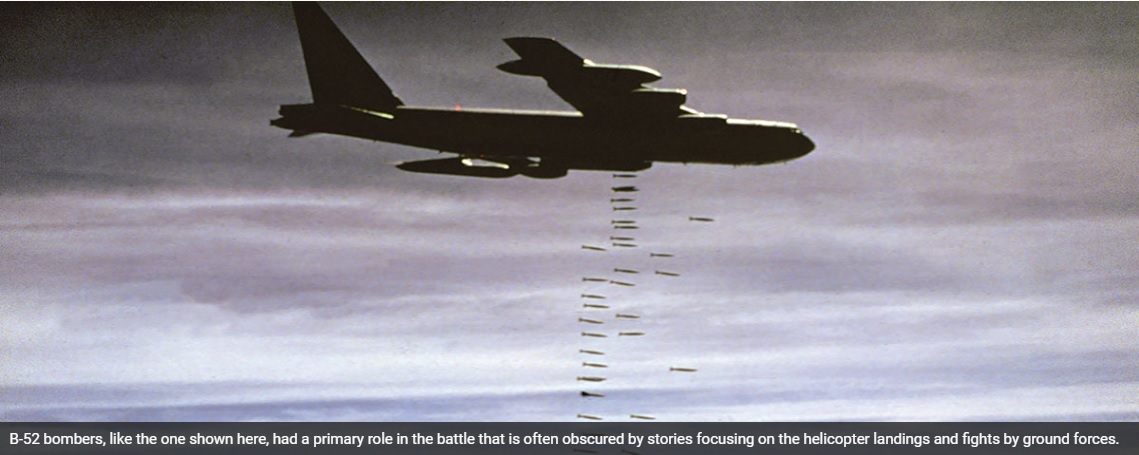
BY TIN NGUYEN
OCTOBER 2018 • VIETNAM MAGAZINE
The 1965 Battle of Ia Drang was one of the most iconic battles of the Vietnam War. It was popularized in the 1992 book We Were Soldiers Once…and Young, by retired Lt. Gen. Harold G. Moore and journalist Joseph L. Galloway, and its 2002 film adaptation, starring Mel Gibson as Moore. Yet the engagement remains one of the most misunderstood battles of the war.
The battle began the morning of Nov 14, 1965, when helicopters dropped Moore’s 1st Battalion, 7th Cavalry Regiment, 1st Cavalry Division (Airmobile), at Landing Zone X-Ray in the Ia Drang Valley to go after North Vietnamese Army forces in the area. Shortly after arriving, Moore’s troops were attacked by a large NVA force, and fierce fighting followed.
When American commanders saw that the enemy had countered Moore’s one battalion with two NVA battalions, they began reinforcing his unit that evening with men from another battalion. Devastating U.S. airstrikes, including B-52 bombing, began the afternoon of Nov.15. Earlier that day, more troops from the other battalion had arrived, and a third battalion was rotated in to allow Moore’s troops to withdraw on Nov.16. The remaining two battalions left on Nov. 17, while the B-52 bombardment of the battered NVA force in the area continued through Nov. 20.
Those events are typically portrayed as a ground force operation supported by air attacks, but the battle plan actually was designed principally as a massive air strike supported by a ground operation that lured enemy forces into the open where they could become targets for B-52 strikes.
The Prelude
The Ia Drang battle was one part of a month long operation in response to an NVA attack on a U.S. Special Forces camp at Plei Me in Pleiku province in South Vietnam’s Central Highlands on Oct. 19, 1965. The 32nd and 33rd NVA regiments besieged the camp until Oct. 25, when a South Vietnamese relief force and U.S. air power broke the North Vietnamese lines.
After failing to take Plei Me, the NVA B3 Field Front, the headquarters organization for three Central Highlands regiments, ordered its 32nd and 33rd regiments to withdraw to their rear bases in the remote Chu Pong massif. These two units were to rejoin the 66th NVA Regiment and together stage a second attack on the Plei Me camp. This time, the 66th would conduct the main assault, supported by a 14.5 mm twin-barrel anti-aircraft gun battalion and a 120 mm mortar battalion.
South Vietnamese commanders in the Central High-lands, designated as the II Corp Tactical Zone, had obtained that vital information through a unique intelligence source—intercepts of radio communications between the Chinese advisers embedded in NVA combat regiments and the advisers’ headquarters in Phnom Penh, Cambodia. The Chinese advisers conversed freely and openly without encryption, not realizing that Mandarin-speaking personnel in the Army of the Republic of Vietnam were monitoring their conversations.
The gold mine of fresh intelligence was used in every aspect of the ARVN-U.S. combined operations, including the scheduling of B-52 strikes. Col. Nguyen Van Hieu, the ARVN chief of staff in II Corps, stated in his after-action report on the Plei Me campaign that “solid intelligence on the enemy situation had permitted the battle to develop to the maximum degree and scale and at the same time lead to the biggest victory ever achieved by the ARVN and its allies.”
ARVN commanders kept the source of this extremely valuable intelligence tightly under wraps. Both the Americans and North Vietnamese at the time thought the information came from “ARVN special agents.” The Chinese adviser connection was revealed by II Corps commander Maj. Gen. Vinh Loc in his 1966 book Pleime, Tran Chien Lich Su (Pleime, The Historical Battle).
On Oct. 26, 1965, ARVN II Corps requested the help of American troops to conduct an operation to strike the NVA 32nd, 33rd and 66th regiments as they were gathering for their second attack on Plei Me. The entire 1st Air Cav Division was assigned to reinforce its South Vietnamese allies. The combined ARVN-U.S. operation was named Truong Chinh (Long Reach) and conducted with “shared intelligence and concept of operations, separate TAOR [tactical areas of responsibility], command, deployment of forces, conduct of activities and reserve,” recalled Vinh Loc in Why Pleime.
The 1st Air Cav established a tactical command post, under the leadership of assistant division commander Brig. Gen. Richard Knowles, next to the ARVN II Corps headquarters in Pleiku. Commanders expanded the 1st Air Cav’s area of responsibility from the Plei Me area to encompass the entire Chu Pong- Ia Drang complex, except the Plei Me camp itself. The camp remained under ARVN responsibility to make it appear weak and entice the enemy to attempt a second attack.
U.S. and South Vietnamese forces executed Operation Long Reach, also known as the Pleiku Campaign, in three steps from Oct. 27 to Nov. 26, 1965:
• Operation All the Way, Oct. 27- Nov. 9, conducted by the 1st Air Cav’s 1st Brigade.
• Operation Silver Bayonet I, Nov. 9-18, 1st Air Cav’s 3rd Brigade.
• Operation Silver Bayonet II, Nov. 18-26, 1st Air Cav’s 2nd Brigade, South Vietnam’s Airborne Brigade.
Silver Bayonet I included the Battle of Ia Drang, fought at Landing Zone X-Ray (Nov. 14-16) and Landing Zone Albany (Nov. 17-18).
The ARVN II Corps oversaw the operation’s concept and intelligence, while 1st Air Cav controlled the troops and the logistics. The operational concept for Long Reach, developed by Hieu, called for B-52 airstrikes to destroy the North Vietnamese 32nd, 33rd and 66th regiments when they regrouped in assembly areas in the Chu Pong-Ia Drang complex after the first Plei Me attack and prepared for a second.
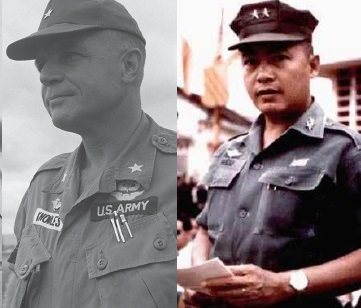
Top commanders in the Ia Drang campaign included Brig. Gen.Richard Knowles and South Vietnamese Col. (later Maj. Gen.) Nguyen Van Hieu
Normally the planning for a B-52 airstrike was handled by the intelligence and operations chiefs of Military Assistance Command, Vietnam, the organization in charge of American forces in South Vietnam. MACV’s intelligence chief would select bombing targets based on information about existing enemy locations in the rear that contained supply bases and troop concentrations.
In Long Reach, however, intelligence collected by the ARVN II Corps’ intercepts of the NVA’s embedded Chinese advisers radioing their Phnom Penh HQ were used in planning an operation that would lure enemy troops into positions where they would become easy targets. The ground forces of the 1st Air Cav would then keep those NVA troops under attack and fix them into place, unable to conduct operations else-where. In the final maneuver, the U.S. Air Force would hit the immobilized enemy from the air.
As Knowles described the plan, 1st Air Cav grabbed a “tiger by the tail” at LZ X-Ray and then moved to LZ Albany to “grab the tiger by its tail from another direction,” while the more destructive B-52s struck the tiger and killed it
Operation All the Way
As the 32nd and 33rd NVA regiments withdrew from Plei Me and headed back to their rear bases in the Chu Pong massif to join up with the 66th Regiment, the 1st Air Cav’s 1st Brigade made sure they kept moving in that direction.
On Oct. 27, “Eagle Flights” of U.S. helicopter gun-ships flew over the area looking for the NVA troops and fired on them when found, forcing the withdrawing enemy regiments—which sometimes dispersed and fragmented into small parties—to be continuously on the march. A Viet Cong field hospital was discovered on Nov. 1 and destroyed.
The 66th NVA Regiment began arriving at the assembly points in the Chu Pong-Ia Drang area on Nov. 2, and the next day its 8th Battalion was ambushed by troopers of the U.S cavalry’s 1st Brigade. On Nov. 4, the 33rd Regiment established positions on Chu Pong’s eastern slopes. Two days later, the 66th Regiment was continuing to move troops into the assembly areas, the 33rd Regiment was waiting for separated units to rejoin it, and the 32nd Regiment was north of the Ia Drang River and adjacent to Cambodia. By Nov. 8, only fragmented NVA units and stragglers remained east of the Chu Pong-Ia Drang complex.
The two battalions of the 8th Cavalry Regiment and two from the 12th Cavalry Regiment involved in the Eagle Flights had just nine engagements with the enemy. But they weren’t on a mission to destroy enemy units. Their primary job was to herd the enemy regiments into the NVA camps in the Chu Pong area.
Although the shepherding phase ended Nov. 9, the NVA units gathered in the Chu Pong massif area were still so widely scattered in a defensive posture that B-52 airstrikes would have been premature and futile. The next phase, however, would entice the enemy units to concentrate their forces—and thereby become vulnerable B-52 targets.
Operation Silver Bayonet I
On Nov. 9, the 1st Air Cav’s 3rd Brigade relieved the 1st Brigade in the Ia Drang area to set the stage for an at-tack on the NVA regiments gathering there.
Maj. Gen. Stanley R. Larsen, commander of I Field Force (the headquarters organization for U.S. units deployed in II Corps), ordered Knowles to have the 3rd Brigade change the direction in which it was moving—switching from west to east—in a feint to make it look like the brigade had lost track of enemy positions.
The NVA’s B3 Field Front fell for the subterfuge and decided to begin preparations for its second attack on the Plei Me camp. On Nov. 11, its three regiments moved into assembly areas to reorganize, re-equip and rehearse for the attack—scheduled for Nov. 16. The NVA troops concentrated into assembly areas were now suitable targets for massive B-52 airstrikes, and MACV’s operations chief, Brig. Gen. William DePuy, was told to set in motion a plan to drop the first wave of bombs about 5 miles west of LZ X-Ray, on the eastern foot of the Chu Pong massif, on Nov. 15 at 4 p.m.
On Nov. 12, Moore’s 1st Battalion, 7th Cavalry, was ordered to prepare for a helicopter landing LZ X-Ray as a diversionary maneuver to distract the B3 Field Front by showing up at the NVA’s rear bases, creating a sudden new threat that would force a postponement of the Plei Me attack and keep the enemy troops bottled up in their assembly areas—ripe targets for the B-52s. The next day the NVA B3 Field Front’s reconnaissance elements and transportation units moved out of their assembly areas for the Plei Me assault, and Moore received the order to depart for Chu Pong.
The assault elements of the NVA B3 Field Front started moving out of their assembly areas on Nov. 14. At 10:48 a.m. that day, Moore’s lead elements arrived at LZ X-Ray, following 30 minutes of artillery bombardment, aerial rockets and airstrikes. They landed about 200 yards from the NVA 66th Regiment’s 9th Battalion.
The B3 Field Front took the bait and ordered the 66th Regiment’s 7th and the 9th battalions to attack the Americans, while the 32nd and the 33rd regiments held their positions in the assembly areas. To reinforce Moore’s troops, a company from the 2nd Battalion, 7th Cavalry, landed in the evening
The next morning other elements of 2nd Battalion, 7th Cavalry, arrived. They were followed by the 2nd Battalion, 5th Cavalry Regiment of the 1st Air Cav’s 2nd Brigade. Those units were supported with a “ring of steel”—artillery fire and round-the-clock air attacks on every route in and out of the landing zone to prevent the 32nd and 33rd NVA Regiments from joining the fight.
The B-52 bombing began at 4 p.m. on Nov. 15 and pounded the NVA into the next day. Around noon on Nov. 16, Moore’s battalion began leaving X-Ray, with the other two battalions remaining there to fight. On Nov. 17, it was time to execute Knowles’ order to “grab the tiger by its tail in another direction” and clear the LZ X-Ray area for B-52 carpet bombing on NVA troops still around there. The 2nd Battalion, 7th Cavalry, marched toward LZ Albany (and would be ambushed on the way), while the 2nd Battalion, 5th Cavalry, moved toward LZ Columbus. Despite the effort to minimize U.S. casualties, 1st Air Cav troopers suffered heavy losses at X-Ray and at Albany, as the enemy relied on costly “human wave” attacks.
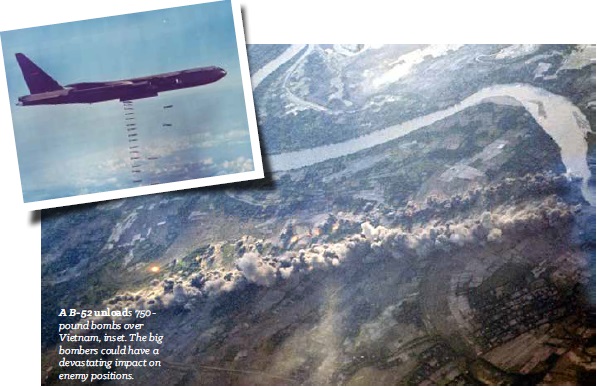
The B-52 strikes continued west to east across the Chu Pong -Ia Drang complex through Nov. 20, leaving the once heavily forested area unsuitable for enemy concealment and cover. The NVA forces’ escape route to Cambodia was reduced to a narrow corridor along the Ia Drang River, and ARVN intelligence estimated that the B-52s had rendered two-thirds of the enemy forces too weak to be effective in combat.
Operation Silver Bayonet II/Operation Than Phong
On Nov. 18, the 1st Air Cavalry’s 2nd Brigade moved up LZ Crooks, about 8 miles northwest of X-Ray, to support the ARVN Airborne Brigade in its mission to destroy the 32nd NVA Regiment’s remaining 334th and 634th battalions. The cavalry brigade established an artillery firebase at LZ Crooks, manned by the 2nd Battalion, 17th Field Artillery Regiment, and secured by the 2nd Battalion, 5th Cavalry.
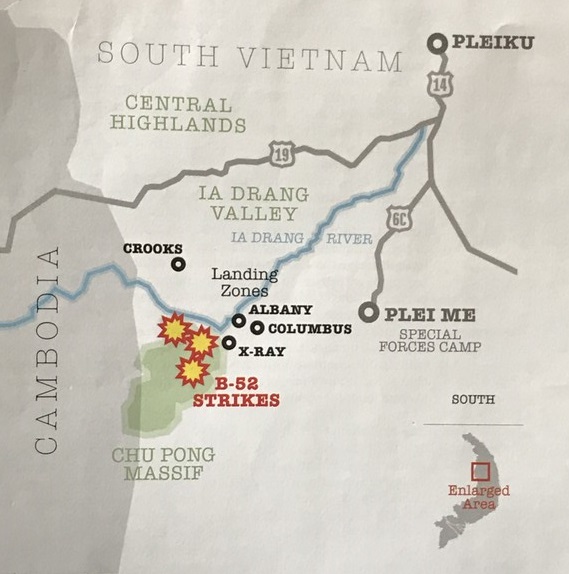
Lt. Col. Ngo Quang Truong, who would later rise to lieutenant general and is considered South Vietnam’s finest combat leader, commanded the ARVN Airborne Brigade. His American adviser was Maj. Norman Schwarzkopf, the future commander of U.S. forces during the 1991 Gulf War.
The ARVN Airborne Brigade destroyed three NVA training centers, a cache of equipment and 75 houses. Its troops also killed 265 Viet Cong and captured 58 weapons in two ambushes on Nov. 20 and 24. On Nov. 26, after the enemy escaped to its sanctuary in Cambodia and the fighting came to an end, the ARVN Airborne Brigade and 1st Air Cav withdrew from the area of operations.
Aftermath
Even after the battle, the NVA, as well as many U.S. and South Vietnamese personnel, were under the impression that the battle was a stand-alone American search-and-destroy ground attack by 1st Air Cav troops who were hit by a larger foe after landing at LZ X-Ray and got help from air support, including B-52 strikes.
A more thorough and in-depth study of primary sources shows that the Battle of Ia Drang was just one component of a joint ARVN-U.S. operation, and the 1st Air Cav landing was a diversionary maneuver intended to switch NVA forces from an offensive to defensive posture and make them the targets of B-52 bombings, the primary thrust of the operation.
The official after-action reports did not clearly spell out the air-ground combination strategy, which was not publicly known until the discovery of Knowles’ personal notes related to the battle. In them he used the expressions “tiger by the tail” and “grab the tiger by its tail from another direction.”
Knowles revealed that strategy in a June 20, 1983, letter to Moore, who had asked the former assistant division commander for his personal recollections of the LZ X-Ray battle. Moore did not include the tiger metaphor in We Were Soldiers Once…and Young, but Knowles’ copy of the letter was donated to The Vietnam Center and Archive at Texas Tech University after his death in 2013. It was made public in October 2017.
Although the air-ground strategy employed in Operation Long Reach destroyed many of the NVA B3 Field Front’s 6,000 troops, it could not be duplicated with similar success in other operations that lacked a key advantage the Americans and South Vietnamese had at Ia Drang—the intercepts of the Chinese advisers’ communications with their headquarters, a source of crucial intelligence for the scheduling of B-52 airstrikes. The NVA later stopped embedding Chinese advisers in combat units (although other collaboration with Chinese advisers continued), and that stopped the intelligence leaks.
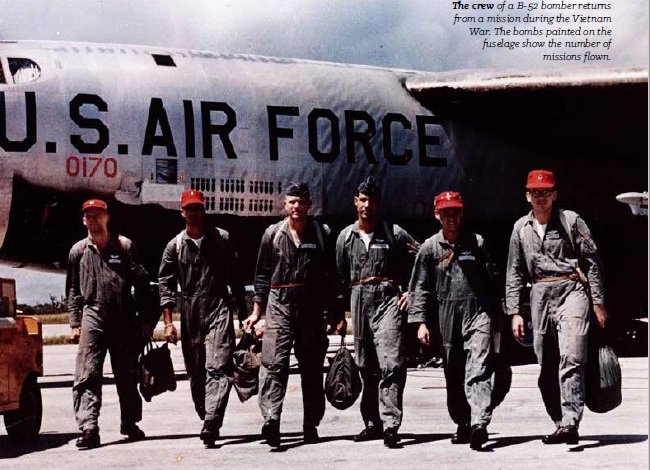
(This article is reproduced with the permission of Vietnam Magazine)
- Operation Pleime-Chupong B-52 Strike?
- The Use of B-52 Strike in Ia Drang Campaign, General Westmoreland’s Best Kept Military Secret
- Air War Over Pleime-Chupong
- Arc Light over Chu Pong Operation
- Catching a Thief Tactic in Pleime Campaign
- Pleime/Chupong Campaign Destroying B3 Field Front Base
- The Uniqueness in Pleime Counteroffensive Operational Concept
- Pleime Counteroffensive into Chupong Iadrang Complex
- The Unfolding of Strategic and Tactical Moves of Pleime Campaign
- Battle of Pleime
- The Truth about the Pleime Battle
- Intelligence Gathering at Ia Drang
- Intelligence, the Key Factor in the Pleime Campaign's Victory
- Roll Call of Combatants at Pleime-Chupong-Iadrang Battlefront
- "Victory at Pleime" ?
- Tactical Moves in Pleime Battle
- Kung Fu Tactics at Pleime Campaign
- Various Diversionary Moves in Support of Arc Lite Strike in Pleime Counteroffensive
- What if there was no master plan for Pleime Counteroffensive?
- Pleime/Chupong Campaign Destroying B3 Field Front Base
- A Few Things You Should Know about Pleime-Iadrang Campaign
- Things the VC Don't Want People To Know at Pleime Battle
- Reviewing "Why Pleime"
- Review of "Intelligence Aspects at Pleime_Chupong Campaign"
- Perplexing Maneuvers at Pleime-Chupong-Iadrang You Might Be Attempted to Question
- A Bird’s-Eye-View of Pleime Campaign
- Operation Dan Thang 21
- US Air Force’s Roles in Pleime Campaign
- Arc Lite Operation Planning and Execution in Pleime Offensive
- A Doctrinal Lesson on the Use of Arc Lite in Pleime Counteroffensive
- Command and Control of Arc Light Strike at Chupong-Iadrang
- A Military Genius in Action at Pleime-Chupong-Iadrang Battlefront
- Command and Control Skills in Pleime Campaign
- Behind-the-scenes Activities at Various Allied Headquarters During Pleime Campaign
- The Two Principals Players Of Pleime Chess Game
- Pleime Battle's Diary
- Pleime Campaign and Pleiku Campaign
- A New Look at Ia Drang
- Operation Long Reach
- LZ X-Ray Battle (General Knowles)
- My Contributions to the Battle of Ia Drang in Wikipedia
- Operation LZ X-Ray
- Colonel Hal Moore’s Self-Aggrandizement in “We Were Soldiers Once ... and Young”
- Colonel Hal Moore Misunderstood his Mission at the Ia Drang Battle
- What Historians Failed to Tell About the Battle at LZ X-Ray
- Hal Moore and 1/7th Air Cavalry Battalion's Real Mission at LZ X-Ray
- Two Different Narrations of LZ X-Ray Battle by II Corps
- Ia Drang Valley Battle? Which One?
- LTC Hal Moore Summoned to a Woodshed Session?
- Colonel Hieu's Operational Concept for LZ X-Ray
- LZ Albany Battle - Chinese Advisors' Perspective
- A Puzzling Air Assault Performed by 1/7 Air Cavalry at LZ X-Ray
- Two Different Narrations of Than Phong 7 Operation by II Corps
- General Schwarzkopf's Naïveté In Ia Drang Battle
- Venturing into Lion's Den in Ia Drang Valley
- American Perspective of Pleime Battle
- General Kinnard's Naïveté in Pleime Campaign
- "No Time for Reflection at Ia Drang" ?
- Pleime Campaign or Pleime-Ia Drang Campaign?
- A Critique of General Bui Nam Ha's Opinions about Plâyme Campaign
- Commenting on General Nguyen Huu An's Account of Plâyme Campaign
- Crushing the American Troops in Western Highlands or in Danang?
- What Really Happened at Ia Drang Battle
- Case Study of a Typical Misinterpretation of Ia Drang Battle
- Ia Drang Battle Revisited
Documents
- Why Pleime
- Pleime, Trận Chiến Lịch Sử
- Pleime Battle Viewed From G3/I Field Force Vietnam
- Long Reach Operation Viewed From G3/I Field Force Vietnam
- LZ X-Ray Battle and LZ Albany Battle Viewed From G3/I Field Force Vietnam
- Than Phong 7 Operation Viewed From G3/I Field Force Vietnam
- Arc Light Strike at Chupong-Iadrang Viewed From G3/IFFV
- Pleiku Campaign
- Intelligence Aspects at Pleime_Chupong Campaign
- Excerpts of General Westmorland’s History Notes re: Pleime-Chupong-Iadrang Campaign
- LZ X-Ray Battle (General Knowles)
- LZ X-Ray After Action Report - LTC Hal Moore and Colonel Hieu
- Than Phong 7
- 52nd Combat Aviation Battalion in Support of Pleime Campaign
- CIDG in Camp Defense (Plei Me)
- Viet Cong Requested Red China's Aid
- Battle of Duc Co
- NVA Colonel Ha Vi Tung at Pleime-LZ Xray-LZ Albany
- The Fog of War: The Vietnamese View of the Ia Drang Battle
- No Time for Reflection: Moore at Ia Drang
- 1st US Cavalry Division Gives Support in the Battle at Plei Me
- Plei Me Fight Stands As War Turning Point
- Plei Me Battle
- Seven Days of Zap
- Pleime Through New York Times' View
- First Engagement With American Troops at Pleime-Iadrang
- Pleime Campaign
- Crushing the American Troops in Central Highlands
- NVA 66th Regiment in Pleime-Ia Drang Campaign
- The Political Commissar at the First Battle Against the Americans in Central Highlands